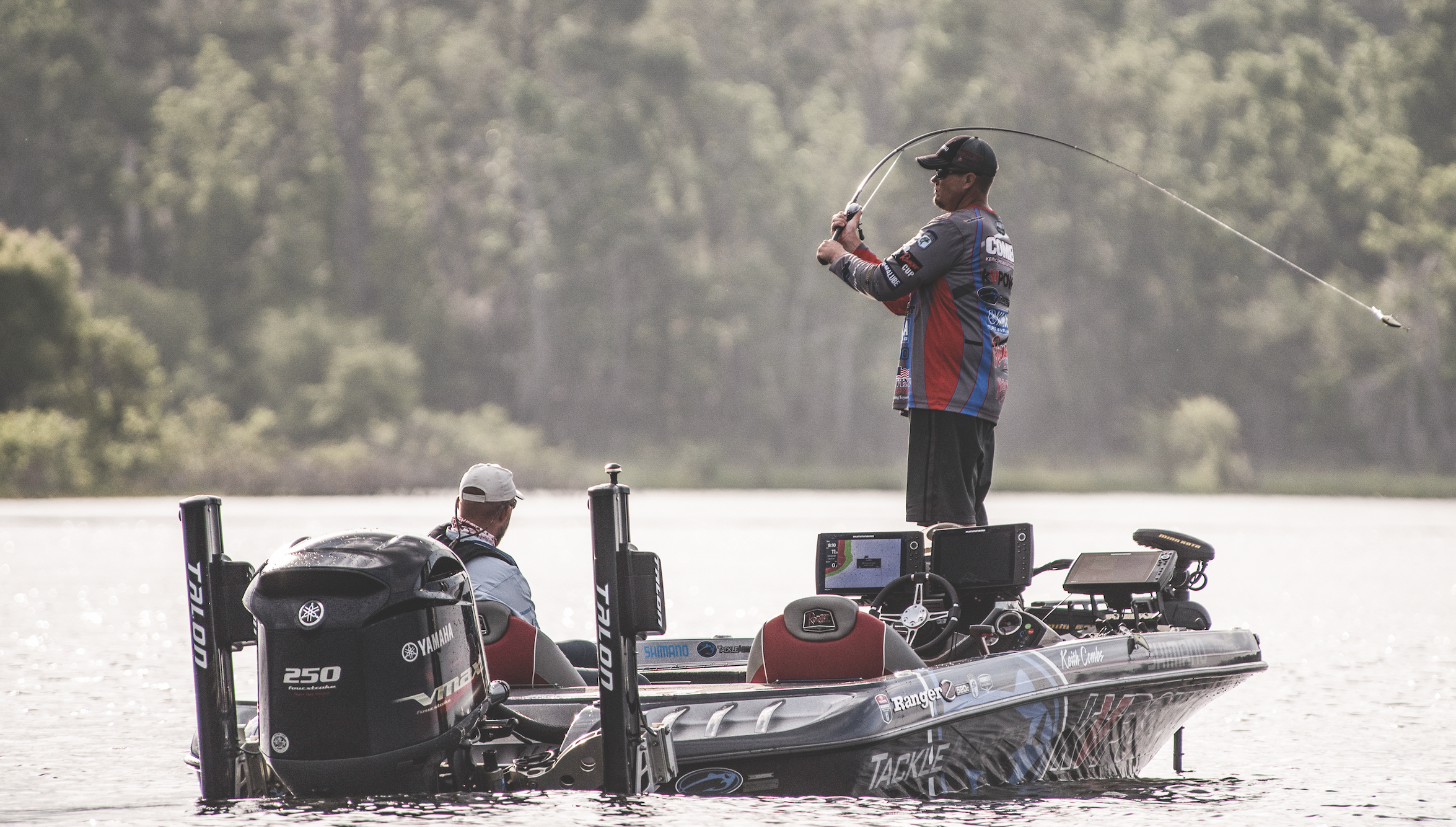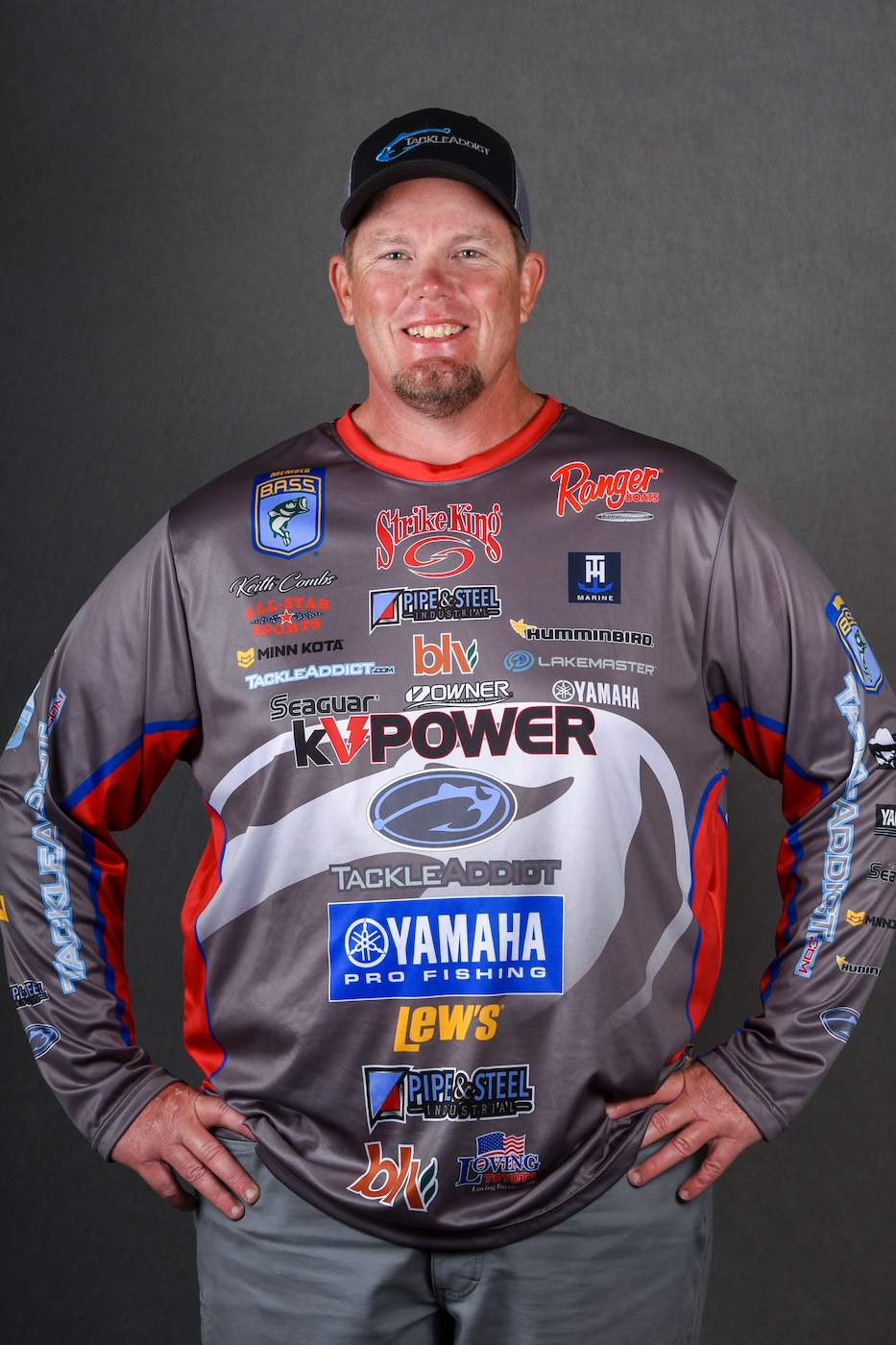
Unfortunately, our Bassmaster Elite Series season ends before we get into the fall cranking bite, one of my favorite patterns of the year. Those bass that have been out in open or deep water chasing bait throughout the summer move shallower and closer to the bottom, and that’s where I love to target them.
They’re more predictable, moving away from main lake flats towards channels and drains. When that happens, there are numerous lures that will work, but because they’re so dialed in on shad a crankbait is often the best choice of all.
What’s really fun about this time of year is that the bass are often grouped up and you can get well in a hurry – going from an empty livewell to 30 pounds in five casts.
For me, the textbook scenario is something like an outside channel bend or a spot where a small drain runs into the channel. I’ll often position the boat in 20 to 25 feet of water and fire up into 12 or 13 feet, which is perfect for a Strike King 5XD or 6XD. You want to contact the bottom and cover, but the bites will frequently come at the drop, when the crankbait breaks away.
Start with a color like Sexy Shad or Tennessee Shad. They work in a range of water clarities, and they mimic the baitfish exceptionally well. You’ll generally be fishing them pretty fast, so use a glass rod. I like something in the 7-foot, 2-inch to 7-foot, 5-inch range, and Shimano makes several good ones in the Expride, Zodias, Intenza and Curado lineups.
You’ll need to pair it with a high-speed reel. My favorite is the Curado DC, but if you want a bargain look to the SLX series. They’re great reels too. Because I’m chasing big fish and trying to contact the cover, I’ll typically spool my reel up with 15 pound test Seaguar InvisX, but you can drop to 10 or 12 if that’s necessary to get bites or to attain more depth.
The biggest mistake that I see among other anglers is choosing the wrong lure for this pattern. I use both the 5XD and the 6XD in this situation. The 5XD actually wobbles fairly hard, while the 6XD has a somewhat tight action for a bait of that size. It’s perfect for that warmer water and acts much different than any other lure in its class.
If you use a different lure, make sure that it’s properly tuned out of the package and be certain to retune it after you catch a big fish. If it’s not running straight, you won’t attain maximum depth, you won’t get as many bites and you’ll lose the ones that do bite. You’ll get hung up more too.
Finally, you have to remain vigilant throughout the fight. These fish will jump, and if you don’t keep the line tight that big plug bouncing around outside of their mouth will come loose far more often than you’d like. That’s a big advantage of the glass rod. It absorbs those head shakes both beneath the water and in the air and results in more bass in the boat. That’s critical when you want to get one in the livewell and send out another cast while the school is still fired up.





